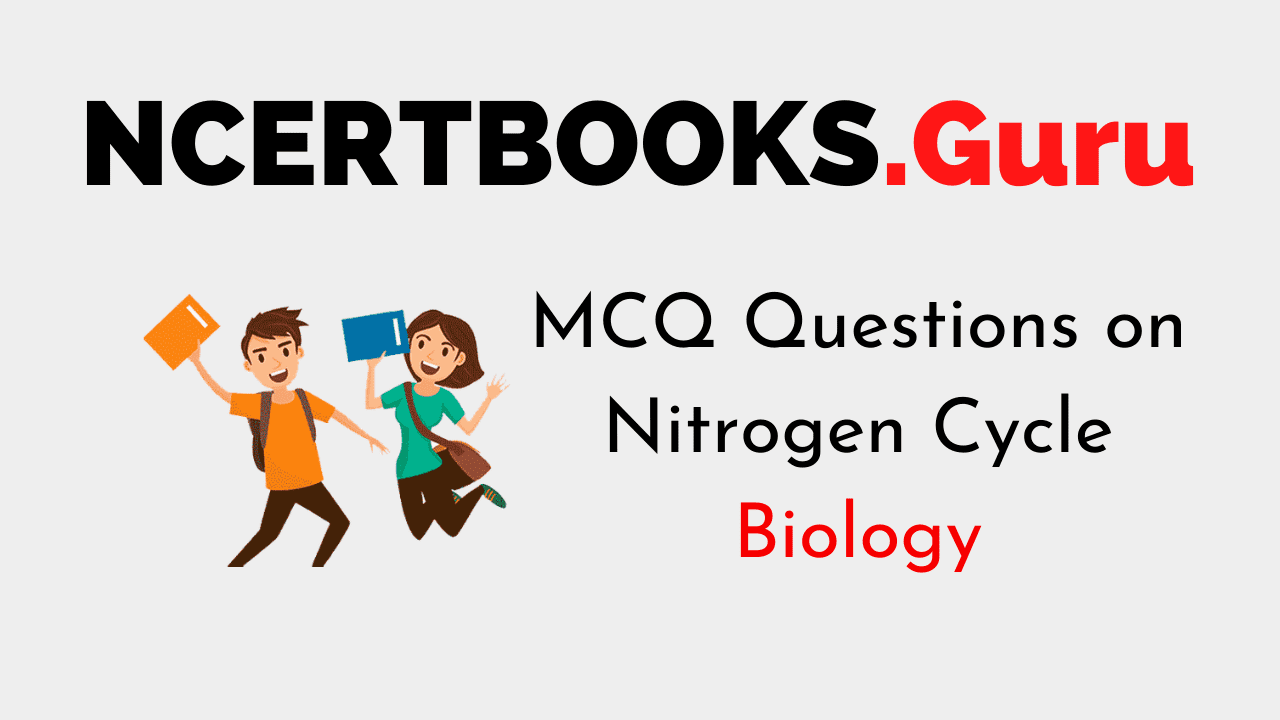MCQ Questions on Human Physiology
1. Which of the following statements is correct?
(a) Atmosphere is the major reservoir for plants
(b) Nitrogen is the most abundant nutrient for plants
(c) Nitrogen cycle is a sedimentary cycle
(d) All
Answer
Answer: (a) Atmosphere is the major reservoir for plants
2. Nitrogen is absorbed by the plants in the form of
(a) Ammonium
(b) Nitrites
(c) Nitrates
(d) All
Answer
Answer: (d) All
3. Nitrogen fixation is the conversion of
(a) N2 to N
(b) N2 to NH3
(c) N2 to NO3–
(d) N2 to urea
Answer
Answer: (b) N2 to NH3
4. Important enzymes involved in nitrogen fixation are
(a) Nitrogenase and hydrogenase
(b) Nitrogenase and hexokinase
(c) Nitrogenase and peptidase
(d) Nitrogenase and hydrolyase
Answer
Answer: (a) Nitrogenase and hydrogenase
5. Symbiotic nitrogen-fixing cyanobacteria are not present in
(a) Azolla
(b) Gnetum
(c) Anthoceros
(d) Cycas
Answer
Answer: (b) Gnetum
6. How many molecules of ATP are required to fix one molecule of nitrogen?
(a) 12
(b) 20
(c) 6
(d) 16
Answer
Answer: (d) 16
7. Ammonification is the formation of
(a) Ammonia from nitrates by decomposers
(b) Ammonia from nitrogen
(c) Ammonia from amino acids
(d) Ammonia from nitrates by nitrogen fixers
Answer
Answer: (c) Ammonia from amino acids
8. Conversion of nitrates to nitrogen is called
(a) Ammonification
(b) Nitrification
(c) Nitrogen fixation
(d) Denitrification
Answer
Answer: (d) Denitrification
9. Conversion of nitrites to nitrates is called
(a) Nitrosococcus
(b) Clostridium
(c) Nitrobacter
(d) Nitrosomonas
Answer
Answer: (c) Nitrobacter
10. Conversion of ammonia to nitrite and then to nitrates is called
(a) Ammonification
(b) Denitrification
(c) Assimilation
(d) Nitrification
Answer
Answer: (d) Nitrification
